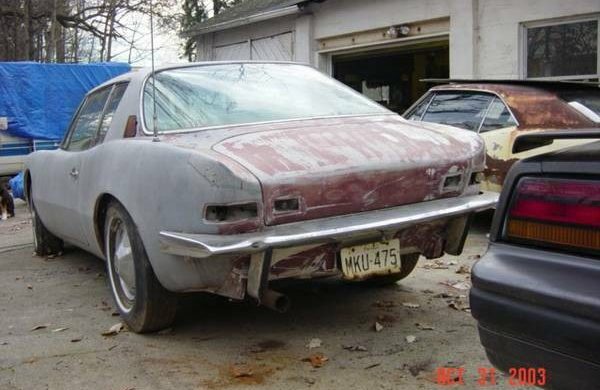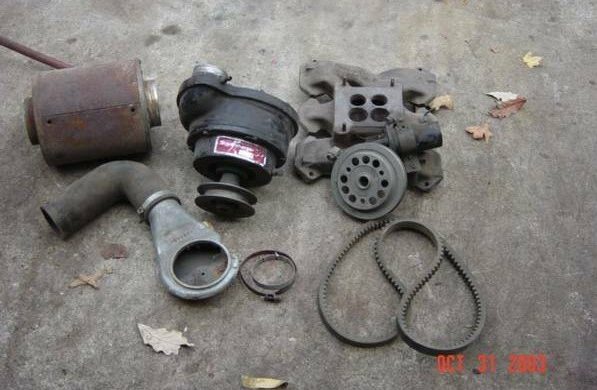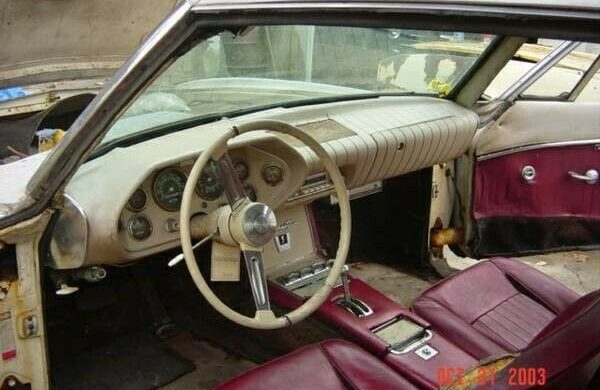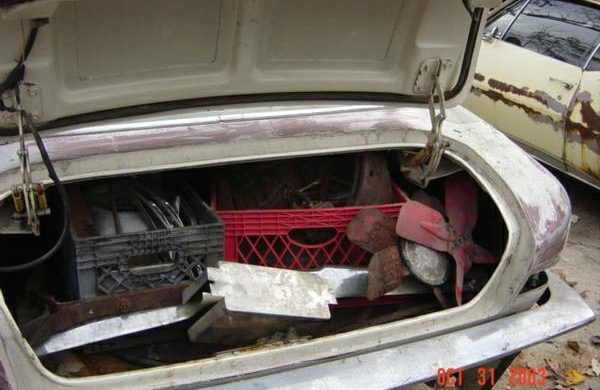The Avanti was in production a mere 18 months, too little and too late to save Studebaker from the Grim Reaper. It was marketed as “America’s only four-passenger high-performance personal car.” The supercharged version of the Avanti was the fastest U.S. production car of its time, capable of 178 mph. Because Studebaker suspended South Bend production at the end of December 1963, the original Avanti came to an end at that time. The 1964 editions are rarer than the 1963s and the production of the supercharged versions were just 281 units. Located in Englishtown, New Jersey, this project Avanti is available here on eBay for the Buy It Now price of $6,500. The Make Offer button is also offered. Thanks, Russell Glantz, for digging this one up for us!
Studebaker sales had seen in an increase in the late 1950s sparked by the debut of their compact Lark. But by 1961, the Detroit automakers had gotten into the game and Studebaker was once again struggling. Studebaker president Sherwood Egbert envisioned the need for a car like the Avanti, hired design guru Raymond Loewy to assemble a crack team, and they put the car together in record time. Using a fiberglass body and mechanical components from the Studebaker parts bin, the Avanti went into production in June 1962. Egbert envisioned demand for 20,000 units in the first year, but production delays held output down to less than 10 percent of that as buyers got tired of waiting.
R1 Avanti’s had Studebaker’s 289 cubic inch V8 that was good for 240 hp. R2 was the designation for the supercharged version. Total R1 production was 2,801 copies, while the R2 saw 1,833 copies. It produced 280 hp. For 1964, there were just 281 copies of the R2 built. We believe the seller’s car has the R2 set-up, not because he says so in his ad, but because a prior listing for the same car from another seller indicates it as such.
The seller of this ’64 Avanti tells us the car has been in storage for years and needs a full restoration. The seller says the engine and transmission are intact, but with the lack of engine compartment photos and providing ones of parts, that may not be the case. The VIN number is 63R2158 would support the R2 theory but was it built in 1963 for 1963 or 1964? The headlight bezels are square which is the easiest way to tell a ’64 from a ’63 Avanti. There is no indication as to the mileage on this car, although the prior listing is said to be 29,000 miles. The seller uses a combination of photos dated from 2003/04 and newer along with others that may have been more recently taken.
Since the car has a fiberglass body, it looks okay overall, but we don’t know the condition of the undercarriage. There has been some work in massaging the body before primer was added over the car’s white paint. The interior looks complete, but the door panels at a minimum will need some work. It would be hard to believe this car is not restorable given its rarity and desirability among collectors. R2 Avanti’s can go for $60,000 in Concours condition. How much will it cost to restore this one?






Sad to see…..but it’s priced right if your in the market for something different !
“Needs work.”
Having purchased an Avanti, this remnant of a wonderful car will take far more to repair it to just useable condition than current market values. Honestly, I’d just buy one in good shape and enjoy it. That’s what I did.
There is nothing more expensive than a cheap Avanti
LOL Ron. That sounds like just about every car that I restored.
Then again, if it casts a shadow, it can be restored. Both quotes are from Studebaker guru, John Polly’s.
Polous. Stupid spell check
I doubt that this is a 1964 model. The serial number (63R2158) indicates this is a earlier produced car, the 1,157 Avanti built, probably late 1962 or early 1963.
It is too early to be a transition 1963-’64 model, and most likely was in an accident and had the nose panel replaced with a square headlight fiberglass panel. The turn signals are fiberglass molded into the front of each fender; 1964 Avantis used metal turn signal housed screwed into the fenders.
Two tone interiors and thin back front seats further indicate a 1963 model. If it was a transition model to 1964 edition, it would likely have at least some ’64 features in the interior.
There also don’t seem to have supercharger emblems on the front fender, although they could have been removed. Lack of underhood photos could be hiding an R1 or R2 engine.
Also, the unattached supercharger has a wide fan belt pulley as used on Hawks or Larks. This supercharger did NOT come from this car.
If it spent its life in New Jersey, it’s likely the frame and underbody torque boxes are rusted beyond repair.
Bid carefully and try to look at this car and get all your questions answered. There are many questions and problems on first glance.
Supercharged 1964 Studebaker Avanti R2! As seen on Bring your Trailer . VIN and speedometer, tell me it was a plain Jane R1, non supercharged, automatic car…..a 63 not 64 by the lack of wood grain inside. The yellow engine means it is not an Avanti engine, looks like a 2 barrel intake. The supercharger that is with it is not Avanti, the long snout is Lark or Hawk, the mounting bracket is not right either.
The intake is obviously a four barrel version.
I had 3990 RS2249. it was built in June 63. This car is earlier than that. Everything Ischuc said is right on.